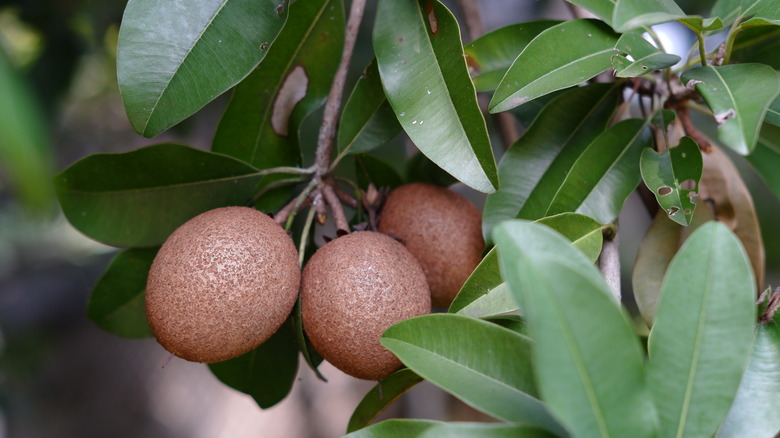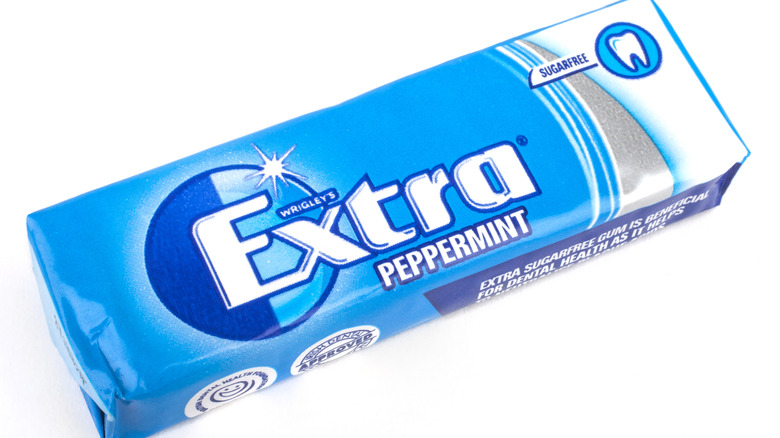The Wide-Ranging Medicinal Origins Of Chewing Gum
Chewing gum's commercial use began during the latter half of the 19th century, but its real history goes back much further. Natural gums, primarily sourced from tree resins, have been chewed since ancient times by cultures around the globe. No, not because people liked to blow bubbles. That feature wasn't discovered until the early 20th century, and only after several refinements, like the ability to actually get it off one's skin without turpentine after popping incidents.
But before it was chewed for fun (and fresh breath), gum was viewed as a form of medicine. In Sweden and in Ancient Greece, for example, gum was used for dental health, the American Dental Association (ADA) notes. In fact, the English word mastication, which means to chew, comes from an Ancient Greek gum sourced from the mastic tree. The oldest evidence for gum's medicinal usage dates back 9,000 years ago, and there are numerous instances of ancient peoples around the world turning to the healing properties of gum, some of which are still utilized today.
Chewing gum's ancient history as a medicine
The practice of making cuts in trees to extract resinous gum dates back thousands of years, and in virtually every case, these natural gums were prized for their medicinal power. In Greece, as we mentioned, resinous gum from the mastic tree was acknowledged in antiquity for its ability to clean teeth and help heal wounds. In Scandinavia, meanwhile, sap from birch trees was also viewed as a traditional medicine, and was chewed to soothe painful toothaches dating as far back as 7,000 B.C.
Aztec and Mayan cultures in Mexico believed that chicle, their own tree-based resinous gum, functioned as a hunger and thirst suppressant, and also freshened breath, an ancillary benefit of natural gums that had earlier been noted by the Ancient Greeks. In North America, too, trees were tapped for their healing power. Indigenous peoples used gum from spruce tree resins, and like the Greeks, they considered it a potent medicine for wound healing.
Chewing gum's modern history as a medicine
In recent studies, many of the traditional medicinal uses of chewing gum have been found to be valid. A 2016 study published in the Journal of Clinical and Translational Research noted the beneficial effects of chewing gum in alleviating stress, and other studies have shown its positive role in enhancing job performance and increasing alertness. Gum has also shown promise as a memory aid.
Furthermore, the dental hygiene aspect noted by Ancient Greeks and Scandinavians continued into modernity, starting in 1899 with the commercial gum, Dentyne, — a portmanteau name derived from dental hygiene — which claimed to ward off cavities. And the ADA confirms, assuming you avoid products with sugar, that chewing gum can indeed make teeth healthier.
As anyone who has ever chewed gum knows, it also stimulates increased saliva production. This, too, seems to have several notable benefits, including staving off acid reflux and removing unwanted bacteria from teeth. So not only can most of us walk and chew gum at the same time, we can also make ourselves a little more alert and a little healthier in the process. Feel free to have some fun and blow bubbles, too.



